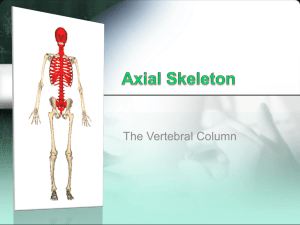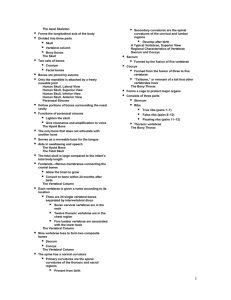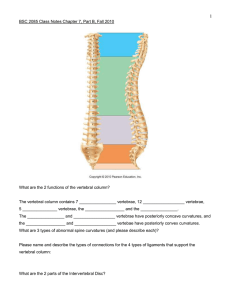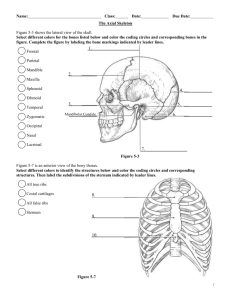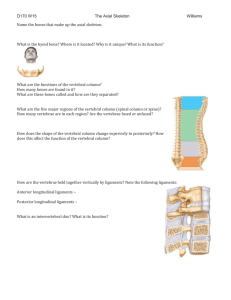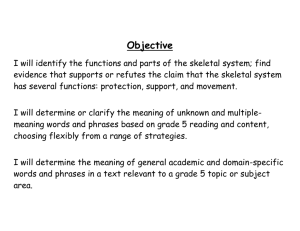The Skeletal System
advertisement
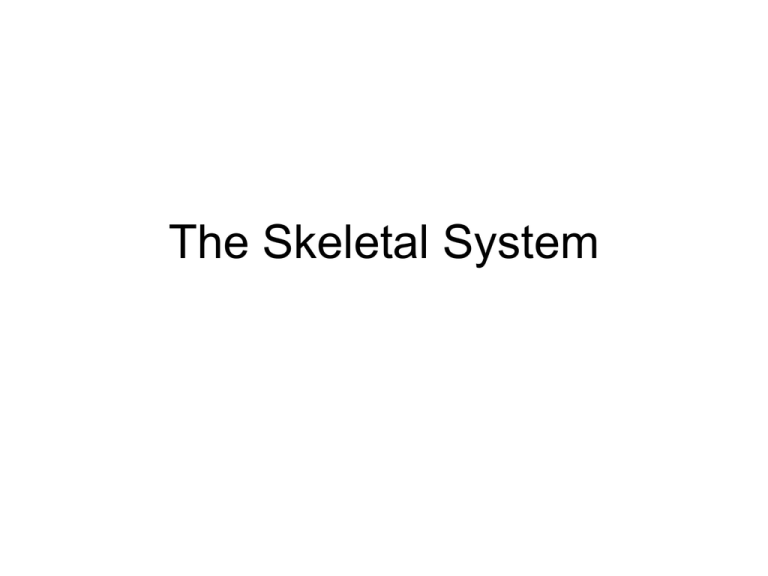
The Skeletal System The Fetal Skull • The fetal skull is large compared to the infant’s total body length • Fontanels—fibrous membranes connecting the cranial bones – Allow the brain to grow – Convert to bone within 24 months after birth The Fetal Skull Figure 5.13a The Fetal Skull Figure 5.13b The Vertebral Column • Each vertebrae is given a name according to its location – There are 24 single vertebral bones separated by intervertebral discs • Seven cervical vertebrae are in the neck • Twelve thoracic vertebrae are in the chest region • Five lumbar vertebrae are associated with the lower back The Vertebral Column • Nine vertebrae fuse to form two composite bones – Sacrum – Coccyx The Vertebral Column Figure 5.14 The Vertebral Column • The spine has a normal curvature – Primary curvatures are the spinal curvatures of the thoracic and sacral regions • Present from birth – Secondary curvatures are the spinal curvatures of the cervical and lumbar regions • Develop after birth The Vertebral Column Figure 5.15 The Vertebral Column Figure 5.16 A Typical Vertebrae, Superior View Figure 5.17 Regional Characteristics of Vertebrae Figure 5.18a Regional Characteristics of Vertebrae Figure 5.18b Regional Characteristics of Vertebrae Figure 5.18c Regional Characteristics of Vertebrae Figure 5.18d Sacrum and Coccyx • Sacrum – Formed by the fusion of five vertebrae • Coccyx – Formed from the fusion of three to five vertebrae – “Tailbone,” or remnant of a tail that other vertebrates have Sacrum and Coccyx Figure 5.19 The Bony Thorax • Forms a cage to protect major organs • Consists of three parts – Sternum – Ribs • True ribs (pairs 1–7) • False ribs (pairs 8–12) • Floating ribs (pairs 11–12) – Thoracic vertebrae The Bony Thorax Figure 5.20a
